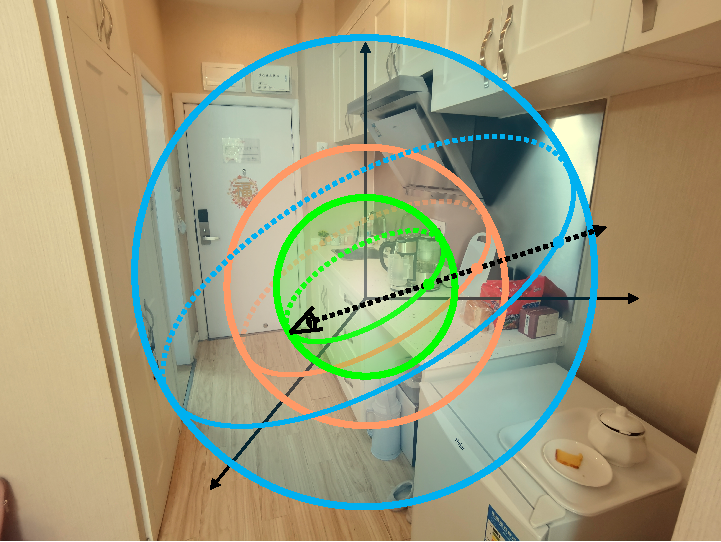FoV-NeRF: Foveated Neural Radiance Fields for Virtual Reality
FoV-NeRF: Foveated Neural Radiance Fields for Virtual Reality
Nianchen Deng, Zhenyi He, Jiannan Ye, Budmonde Duinkharjav, Praneeth Chakravarthula, Xubo Yang, Qi Sun[★ Best Journal Paper Award ★] IEEE TVCG (presented at ISMAR 2022 & SIGGRAPH 2023)
PDF Video Code
Abstract
Virtual Reality (VR) is becoming ubiquitous with the rise of consumer displays and commercial VR platforms. Such displays require low latency and high quality rendering of synthetic imagery with reduced compute overheads. Recent advances in neural rendering showed promise of unlocking new possibilities in 3D computer graphics via image-based representations of virtual or physical environments. Specifically, the neural radiance fields (NeRF) demonstrated that photo-realistic quality and continuous view changes of 3D scenes could be achieved without loss of view-dependent effects. While NeRF can significantly benefit rendering for VR applications, it faces unique challenges posed by high field-of-view, high resolution, and stereoscopic/egocentric viewing, typically causing low quality and high latency of the rendered images. In VR, this not only harms the interaction experience but may also cause sickness.
To tackle these problems toward six-degrees-of-freedom, egocentric, and stereo NeRF in VR, we present the first gaze-contingent 3D neural representation and view synthesis method. We incorporate the human psychophysics of visual- and stereo-acuity into an egocentric neural representation of 3D scenery. We then jointly optimize the latency/performance and visual quality while mutually bridging human perception and neural scene synthesis to achieve perceptually high-quality immersive interaction. We conducted both objective analysis and subjective studies to evaluate the effectiveness of our approach. We find that our method significantly reduces latency (up to 99% time reduction compared with NeRF) without loss of high-fidelity rendering (perceptually identical to full-resolution ground truth). The presented approach may serve as the first step toward future VR/AR systems that capture, teleport, and visualize remote environments in real time.}

Bibtex
@ARTICLE {Deng:2022:FOVNERF,
author = {N. Deng and Z. He and J. Ye and B. Duinkharjav and P. Chakravarthula and X. Yang and Q. Sun},
journal = {IEEE Transactions on Visualization & Computer Graphics},
title = {FoV-NeRF: Foveated Neural Radiance Fields for Virtual Reality},
year = {5555},
volume = {},
number = {01},
issn = {1941-0506},
pages = {1-11},
doi = {10.1109/TVCG.2022.3203102},
publisher = {IEEE Computer Society},
address = {Los Alamitos, CA, USA},
month = {aug}
}



